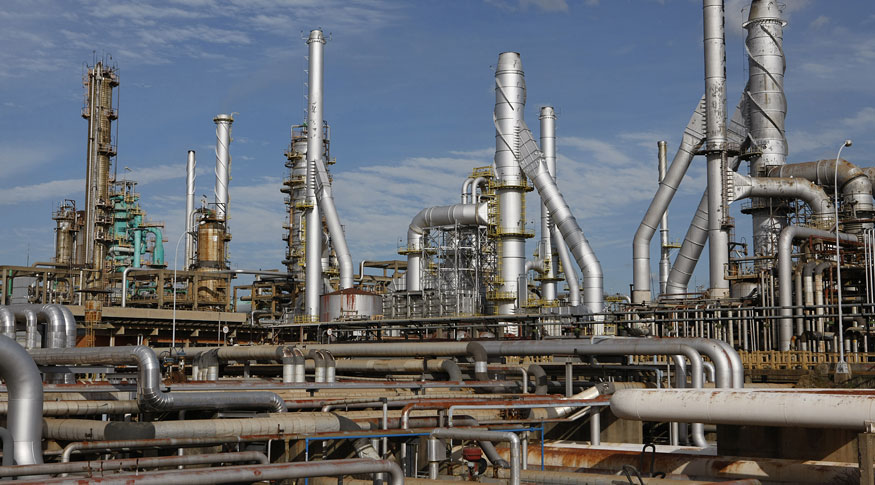IPP
Prices in industry fall 1.29% in December, close 2022 with rise of 3.13%
February 01, 2023 09h00 AM | Last Updated: February 01, 2023 01h18 PM

The prices in the industrial sector fell 1.29% in December 2022 over the previous month, the fifth negative figure in a row. As a result, inflation in industry closed the year of 2022 with a rise of 3.13%, the third lowest cumulative value in the year since the beginning of the time series in 2014. The data are from the Producer Price Index (IPP), released today (1) by the IBGE. The rise in 2022 was nearly 25 percentage points (p.p.) lower than that of 2021.
“This result consolidates the deflating path of industry started in the second semester, which can be associated, to a great extent, to the low prices of the commodities in the foreign market. Oil barrel, iron ore and fertilizers are some of the products that stand out in this context. Besides exerting a direct impact on the result of mining and quarrying industries, the reduction in the price of crude oil, following the foreign prices, naturally causes a reduction in the costs along its chain, like in refining and other chemicals, reflecting on the final price practiced in these sectors,” explains Felipe Câmara, manager of the IPP.
In the case of food products, the slight rise recorded in December is associated with punctual increases in the price. “Products with a major influence on the result of this sector, like beef and milk, maintained the dynamics of previous months, with prices facing downward due to the bigger supply in this time of the year. That influence was surpassed by increases like in crystallized sugar, caused by a slow expansion of the national supply, or in soybean bran, which followed the current rise in the foreign market,” adds Câmara.
The IPP measures the change in prices of products at the "factory gate", without tax or freight, of 24 activities of mining and quarrying and manufacturing industries. The activities that reported the highest changes in the cumulative index in the year in December 2022 were pulp and paper (19.45%), printing (19.17%), toiletries, soaps and cleaning products (16.99%) and manufacture of machinery and equipment (15.71%). On the other hand, the major influences on the cumulative index of the overall industry came from petroleum refining and biofuels (1.23 p.p.), other chemicals (-1.21 p.p.), food products (1.20 p.p.) and basic metals (-0.87 p.p.).
Under the perspective of the major economic categories, the annual result is based on the change of 11.92% in capital goods (with an influence of 0.82 p.p.), 0.90% in intermediate goods (0.53 p.p.) and 5.18% in consumer goods (1.79 p.p.).
In relation to December 2022, the change compared with the previous month was -1.29%. In November, compared with October, industry had registered a drop of 0.54%.
In the last month of the year, 15 out of 24 industrial activities investigated recorded negative price changes over November, following the sign of the change in the overall industry. The highlights were: mining and quarrying industries (-7.21%); petroleum refining and biofuels (-5.46%); wood (-2.96%); and other chemicals (-2.79%). In terms of influence, the activities that mostly highlighted were petroleum refining and biofuels (-0.68 p.p.), mining and quarrying industries (-0.33 p.p.), other chemicals (-0.25 p.p.) and basic metals (-0.08 p.p.).
Among the major economic categories, the change in the prices between November and December was 0.85% in capital goods (with an influence of 0.06 p.p.), -2.08% in intermediate goods (-1.21 p.p.) and -0.43% in consumer goods (-0.15 p.p.).
Know more about the IPP
The Producer Price Index (IPP), whose scope is the mining and manufacturing industries, aims at measuring the average change of sale prices received by domestic producers of goods and services, as well as its evolution over time, signaling the short-term inflationary trends in Brazil. It is a key indicator for the macroeconomic follow up and, consequently, a valuable analytical instrument to decision takers, either public or private.
The survey investigates, in slightly more than 2,100 enterprises, the prices received by producers, free from tax, tariffs and freight, defined according the most usual commercial practices. Nearly 6,000 prices are collected monthly. Adopting the National Classification of Economic Activities (CNAE 2.0), the IPP produces indicators for 24 activities in the mining and manufacturing industries, besides reorganizing the same data into major economic categories, split into capital goods, intermediate goods and consumer goods (durable and semi-durable and non-durable).



















